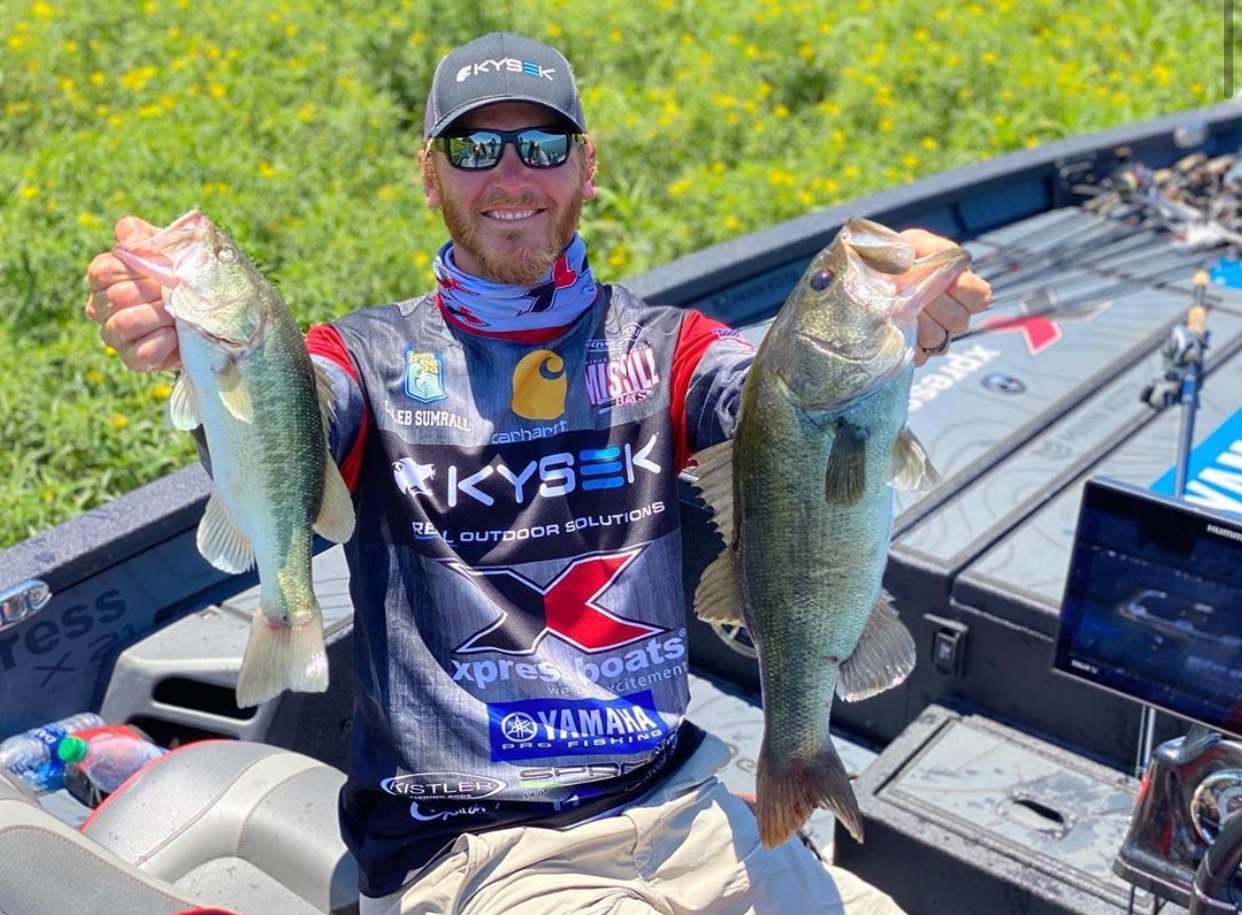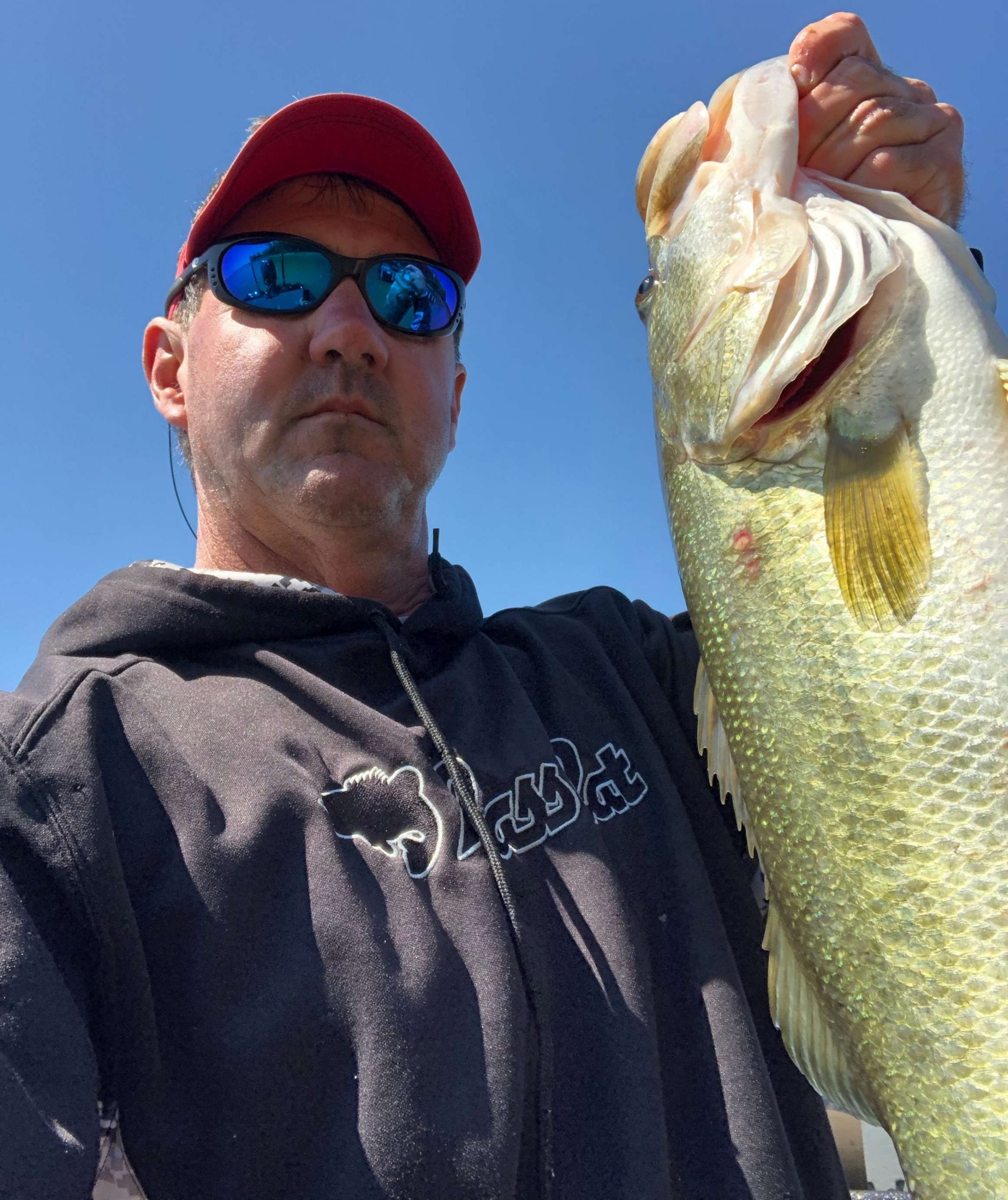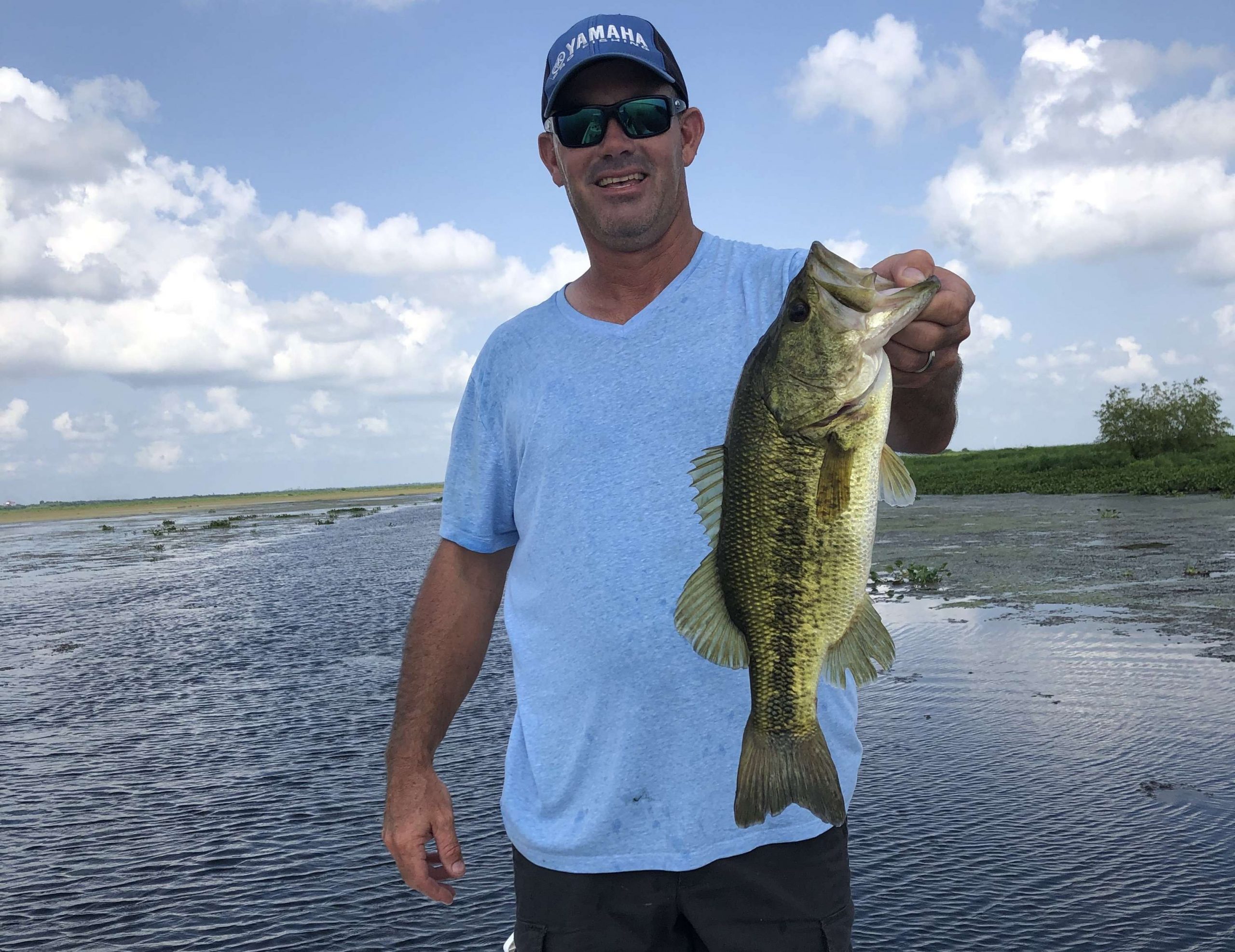
While most of the nation is shivering and snooping around deeper haunts for wintering bass, anglers follow a different set of rules for largemouth inhabiting Southern Louisiana waters. With mostly warm conditions accommodating shorts and t-shirts right through Santa’s visit, the fish are usually in a cooperative mood — even in the colder times.
For an insider’s look, we asked a trio of Louisiana-based Elites for their favorite ways to enjoy the Bayou State bounty.
Knock ’em out
In renowned hotspots like the Atchafalaya Basin, Bayou Black and lakes Cataouatche, Caddo and Chicot, Caleb Sumrall spends many December days punching isolated mats tucked amid cypress trees. Such scenarios, he said, are usually few and far between, but they’re definitely worth the search.
“Typically, you’re not going to find a lot, but when you do find mats between trees and the bank — especially at the mouths of ditches, drains or marsh outlets — it’s going to be money,” said the pro from New Iberia. “The mat is a roof; it’s the first thing to warm up in the morning when we have colder nights. When that sun hits it, that mat is like a heating blanket for the fish.
“In the wintertime, I’ve sat on one mat and caught 30 fish without moving my boat.”
Sumrall does his punching work with a Missile Baits D-Bomb rigged on a 4/0 Gamakatsu Super Heavy Cover Flipping Hook with a 3/4- to 2-ounce weight and 60-pound Sunline X-Plasma braid. If he’s getting short strikes, or if the water’s super clear, he’ll downsize to a Baby D-Bomb and a 3/0 hook. Top colors are Bruiser Flash, California Love and green pumpkin.
“I keep it simple. I really don’t think the fish notice the bait color that much; it’s more of a reaction bite,” Sumrall said. “If I feel like I need more bulk, I’ll add a Delta Lures punch skirt.”
Technique tip: Pay attention to the soak time. The punch-drop-repeat routine may work in the warmer season, but this time of year, Sumrall reminds himself to vary his presentations to determine what triggers the fish.
“The (stocked) Florida-strain largemouth really get lethargic in the wintertime, so you really have to pay attention to what they want,” he said. “I may flip the bait in there, yo-yo it three or four times and the next time, I might pull it up to the mat and shake it for about five seconds and leave it in there a little longer.
“If I get a bite on a four-second soak, I might try to concentrate on that (timing). That’s the most important thing in the wintertime — forcing lethargic fish to bite.”
Also important to Sumrall — the lightest weight that will pull his bait through the mat. And don’t interrupt the fall, he said. If the fish feels your resistance before you feel the fish, that’s usually a blown opportunity.
Cypress smackdown
Also a fan of punching those cypress swamp mats, Robbie Latuso of Gonzales, La., shows the trees some Christmas love, too. For him, pitching a 1/2-ounce black/blue Missile Baits Ike Flipping Jig with a black/blue Zoom Super Chunk around the base of these distinctive trees is the best way to connect with a good one.

“We will have some fish spawning in December, and the first fish to go are the big ones,” Latuso said. “I’ve caught so many that were about to bust with eggs that I know they were spawning, or about to.”
Favoring the Atchafalaya Basin, Latuso notes that this area is affected by tides, as well as the Mississippi River level. Spring sees the cresting river bringing super high water in the basin, but if winter brings heavy rains, Christmas may also find the area swollen.
Latuso likes low water because it concentrates fish more and takes a lot of the shallower areas out of play. Regardless of water level, his targeting priority remains the same.
“I’m looking for the biggest, dominant cypress tree in a protected area,” Latuso said. “If you have a dead end and there’s one big dominant tree in the back corner, there’s probably a big fish on it.
“It may take 30 casts and you may have to fish all around that tree and hit it at every angle. But normally, he’ll bite sooner or later.”
Delta darlings
Areas like Delacroix, Buras and Venice are well-known for their stellar redfishing, but Tyler Carriere knows that much of the Mississippi Delta’s inner marsh waters also host a respectable population of largemouth bass. Making his home in Youngsville, he guides the Port Sulfur area (East Delta), where he finds loads of green fish hugging depth variances.

“I fish the little mud boat ditches that run through the reeds,” Carriere said. “Duck hunters cut these little ditches when they run through the marsh.
“The surrounding flat might have a foot of water and that little ditch might have a 1 1/2 to 2 feet of water. Those ditches are not very wide. They’re about the width of a boat, and they’re mostly a mud bottom with a little bit of hydrilla.”
Carriere catches his marsh fish by slow rolling a baitfish colored 2.8 Keitech on an Owner Flashy Swimmer — a weighted shank hook with a trailing blade and a TwistLOCK Centering-Pin Spring. He’ll also hop and swim a Junebug or black/blue flake Zoom Speed worm on a No. 3 worm hook with a 3/16 tungsten weight.
“The fish will eat shrimp, they’ll eat crabs, they’ll eat mullet, they’ll eat perch, they’ll eat mud minnows,” Carriere said. “Especially when the water’s falling, they eat whatever comes out those ditches.”
While bass mostly remain above the brackish zone, the water still fluctuates with coastal tides. True for any tidal environment, Carriere finds the outgoing cycle generally produces the most consistent action.
You can catch bass on the rising tide, but higher water allows them to venture nearly out of reach, while falling water brings forage and predators to the more accessible marsh edges. Also, marshes filter the water, so the exiting flow is cleaner and more conducive to feeding.
“We catch a lot of 2- to 3-pounders, but a big one is about 4- to 5-pounds,” Carriere said. “The biggest difference in fishing (the Delta marsh) is that there’s not as much pressure. There’s so much area to fish, a lot of fish have never seen a bait.”
What’s for dinner?
Besides the stellar fishing, Southern Louisiana boasts a rich undercurrent of Cajun culture, with hardy, distinctive cuisine at its foundation. Spring crawfish boils are a treat everyone should experience at least once, but favorites like étouffée, jambalaya and boudin are definitely worth sampling.
Latuso said his wife’s deer roast stuffed with bacon, garlic, onion and injected with a savory marinade is a Christmas classic. Carriere and Sumrall both choose gumbo, a spicy stew made with a roux base, okra and various meat or seafood thickened with filé (dried sassafrass leaves).
Carriere said he prefers a dark, thick roux; no thin gumbo in his bowl. Sumrall’s all about the fresh Andouille sausage and chicken, with his family’s multi-generational homemade roux formula.
When we asked him to elaborate on the latter. Sumrall chuckled: “I could tell you, but I’d have to kill you.”
(In fairness, I say the same thing about my rib rub.)





